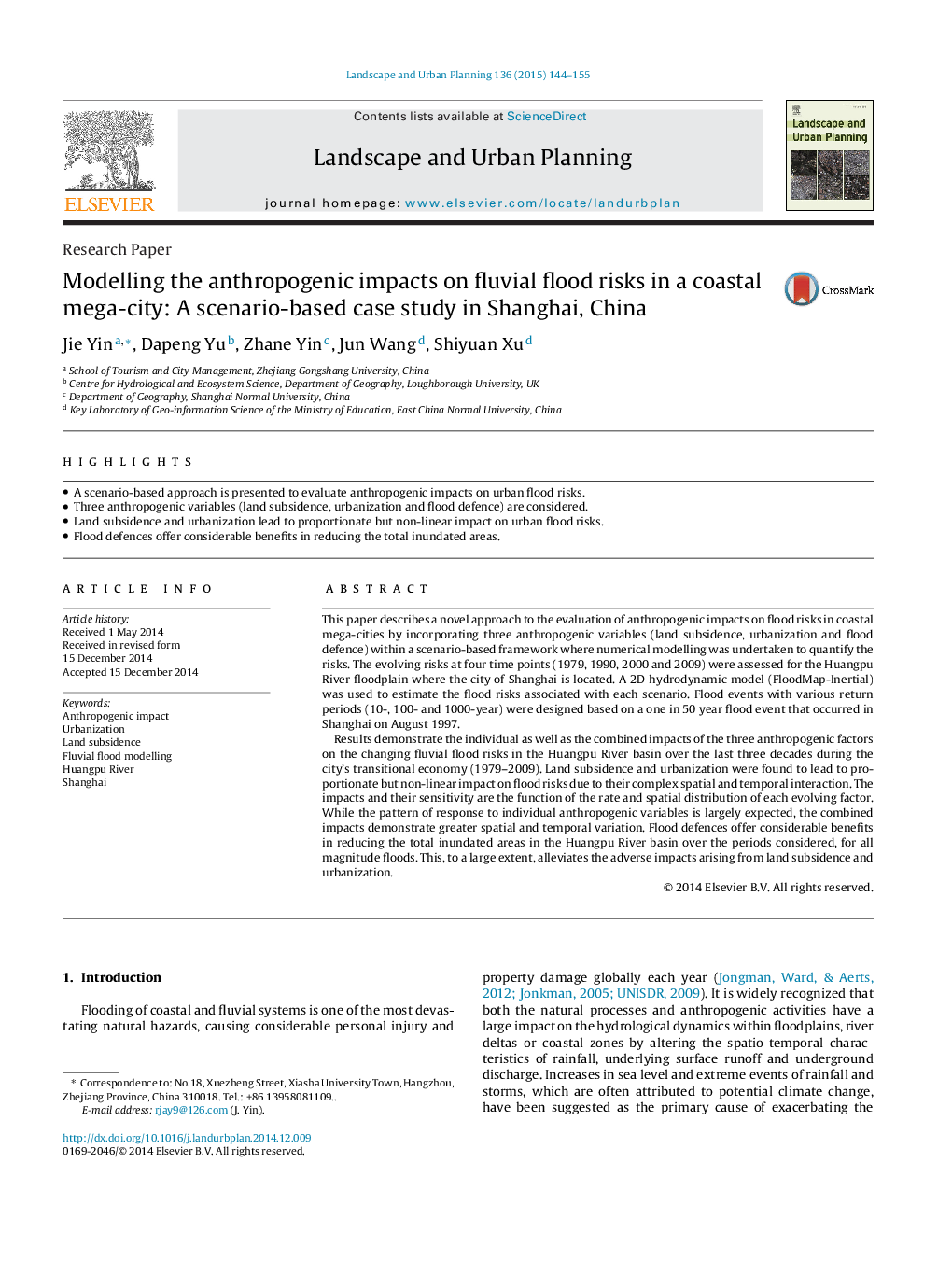| Article ID | Journal | Published Year | Pages | File Type |
|---|---|---|---|---|
| 7461225 | Landscape and Urban Planning | 2015 | 12 Pages |
Abstract
Results demonstrate the individual as well as the combined impacts of the three anthropogenic factors on the changing fluvial flood risks in the Huangpu River basin over the last three decades during the city's transitional economy (1979-2009). Land subsidence and urbanization were found to lead to proportionate but non-linear impact on flood risks due to their complex spatial and temporal interaction. The impacts and their sensitivity are the function of the rate and spatial distribution of each evolving factor. While the pattern of response to individual anthropogenic variables is largely expected, the combined impacts demonstrate greater spatial and temporal variation. Flood defences offer considerable benefits in reducing the total inundated areas in the Huangpu River basin over the periods considered, for all magnitude floods. This, to a large extent, alleviates the adverse impacts arising from land subsidence and urbanization.
Related Topics
Life Sciences
Agricultural and Biological Sciences
Ecology, Evolution, Behavior and Systematics
Authors
Jie Yin, Dapeng Yu, Zhane Yin, Jun Wang, Shiyuan Xu,
